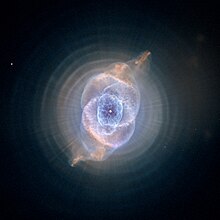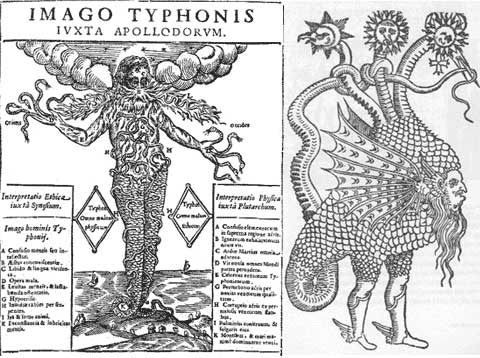With the inquisitor's

permission lets get into the Chinese draconian purple mysteries
 http://en.wikipedia.org/wiki/Purple_Forbidden_enclosure
http://en.wikipedia.org/wiki/Purple_Forbidden_enclosureThe Purple Forbidden enclosure (紫微垣) is one of the San Yuan(三垣) or Three enclosures. Stars and constellations of this group lie near the north celestial pole and visible all year from temperate latitudes in the Northern Hemisphere.
Hidden Virtue 陰德 2 Draco Hidden matters of the Emperor and prohibited to know
Celestial Pillar 天柱 5 Draco / Cepheus Pillar of the local post decree, also responsible for supporting earth
Canopy Support 杠 9 Camelopardalis / Cassiopeia The handle of canopy
Canopy of the Emperor 華蓋 7 Cassiopeia Umbrella shelter used by the emperor
Inner Steps 內階 6 Ursa Major The ladder to connect of Purple Palace

The Emperor and also the Prince matters

 http://homepage.ntlworld.com/simon.quinn/rune.html
http://homepage.ntlworld.com/simon.quinn/rune.htmlThe illustration is the ancient symbol for the alchemic material soapstone.Alchemy is generally known to be the practice of turning metal into gold.This obviously yields comparison with the recent album The Gold Experience (along with the NPG's Goldnigga and the track 3 chains O Gold from the 0(+> album).The books introductory text on the origins of alchemy features the following:
"In the Dark Ages the practice of alchemy was under ban. The church opposed it as a black and satanic art. Rulers suppressed it since they feared that the power of individuals to manufacture an unlimited supply of gold would undermine the fundamentals of their absolutistic reign."
The substance Soapstone is compacted talc,and as an elixir it was believed it could help to cross "the veil of dimensions","Cross the Line"-Prince ,1988,"Together we'll love through all space and time"-7,1992.
The outer layers of the Christ the Redeemer sculpture are made of soapstone. Rio de Janeiro
Soapstone (also known as steatite or soaprock) is a metamorphic rock, a talc-schist. It is largely composed of the mineral talc and is thus rich in
magnesium. It is produced by dynamothermal metamorphism and metasomatism, which occurs in the areas where tectonic plates are subducted, changing rocks by heat and pressure, with influx of fluids, but without melting. It has been a medium for carving for thousands of years.
Magnesium ( /mæɡˈniːziəm/ mag-nee-zee-əm) is a chemical element with the symbol Mg, atomic number 12, and common oxidation number +2. It is an alkaline earth metal and the eighth most abundant element in the Earth's crust [2] and ninth in the known universe as a whole.[3][4] Magnesium is the fourth most common element in the Earth as a whole (behind iron, oxygen and silicon), making up 13% of the planet's mass and a large fraction of the planet's mantle. The relative abundance of magnesium is related to the fact that it is easily built up in
supernova stars from a sequential addition of three helium nuclei to carbon (which in turn is made from three helium nuclei). Due to magnesium ion's high solubility in water, it is the third most abundant element dissolved in seawater.[5]
Magnesium is a highly flammable metal, but while it is easy to ignite when powdered or shaved into thin strips, it is difficult to ignite in mass or bulk. Once ignited, it is difficult to extinguish, being able to burn in nitrogen (forming magnesium nitride), carbon dioxide (forming magnesium oxide and carbon) and water (forming magnesium oxide and hydrogen). This property was used in incendiary weapons used in the firebombing of cities in World War II, the only practical civil defense being to smother a burning flare under dry sand to exclude the atmosphere. On burning in air, magnesium produces a brilliant white light which includes strong ultraviolet. Thus magnesium powder (flash powder) was used as a source of illumination in the early days of photography. Later, magnesium ribbon was used in electrically ignited flash bulbs. Magnesium powder is used in the manufacture of fireworks and marine flares where a brilliant white light is required. Flame temperatures of magnesium and magnesium alloys can reach 3,100 °C (3,370 K; 5,610 °F),[7] although flame height above the burning metal is usually less than 300 mm (12 in).[8] Magnesium may be used as an ignition source for thermite, an otherwise difficult to ignite mixture of aluminium and iron oxide powder.

The magnesium-bodied Honda RA302 of Jo Schlesser crashes and burns during the 1968 French Grand Prix. Schlesser was killed. The magnesium car body did not cause the fire or the death, but it greatly hindered attempts to douse the fire with water
Supernovas detonate in Milky Way every 50 years
18:08 06 January 2006 by Kelly Young
Gamma rays from a rare aluminium isotope produced by exploding stars appear to permeate our galaxy, the Milky Way.
The new measurement has allowed astronomers to predict a supernova rate of two explosions per century in our galaxy, confirming the supernova rate seen in other galaxies. The researchers also calculated that about 7.5 stars are born in our galaxy every year.
Massive stars and supernova explosions create a radioactive isotope of aluminium - aluminium-26. The decay of the isotope to magnesium creates gamma rays that astronomers are able to observe.
The team used ESA's INTEGRAL spacecraft, launched in 2002, to examine the distribution of gamma rays in the disc of the Milky Way. Astronomers could see that the gamma rays were coming from the central region of the galaxy and not simply from local hot spots in the foreground, near Earth.
Instant snapshot
Matter closer the centre of the galaxy rotates faster than matter farther out, counterbalancing the increased gravitational tug at the heart of the Milky Way. This means the gamma rays are affected differently by the Doppler shift, and this can be detected from Earth: gamma-rays produced in regions closer to Earth would be shifted less.
Gamma rays penetrate the dust and gas that obscures many of the star-forming regions of the galaxy. "This observation of aluminium-26 creates an instant snapshot of the galaxy for us," says Dieter Hartmann, an astronomer at Clemson University, South Carolina, US, and a member of the research team. "It has drawn us an accurate picture that we haven't had before."
Based on the distribution of gamma rays, Roland Diehl, of the Max Planck Institute for Extraterrestrial Physics in Garching, Germany, and colleagues estimated that the aluminium-26 in the galaxy has a mass equivalent to that of three suns.
Aluminium-26 has a half life of 750,000 years, allowing researchers to track the number of recent supernovae. They inferred that one supernova explosion about every 50 years would be needed to generate the amount of aluminum-26 seen in the galaxy, though none have been recorded for a while: "We've actually been overdue now for 300 years," Hartmann told New Scientist.
"Our galaxy isn't the biggest producer of stars and supernovae in the universe, but there's still plenty of activity," Diehl notes. "A sustained star formation rate of this magnitude is just what one needs to drive its chemical and dynamical evolution, which has led to life on Earth."
Supernovas: Making Astronomical History
Fusion and Building Chemical Elements
Binding Energies
http://snews.bnl.gov/popsci/fusion.htmlAs time progresses, a massive star comes to resemble a nuclear-fusion onion, with reactions progressing in layers. The very center of the star will be "burning" the heaviest elements, with lighter nuclei "burning" in successive layers, out from the center. We might find, for example, a core in which oxygen fuses to silicon and sulfur, surrounded by layers in which
neon fuses to oxygen and magnesium, carbon fuses to neon and magnesium, and so forth.
Fu Chinese blessing

Trident - Satan - Kraft foods - Purple Cadbury - Cat eye nebula gamma rays



Resuming


